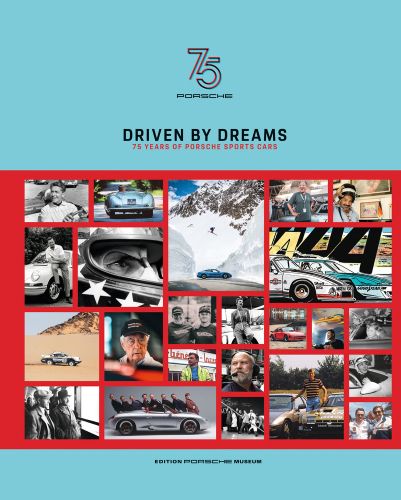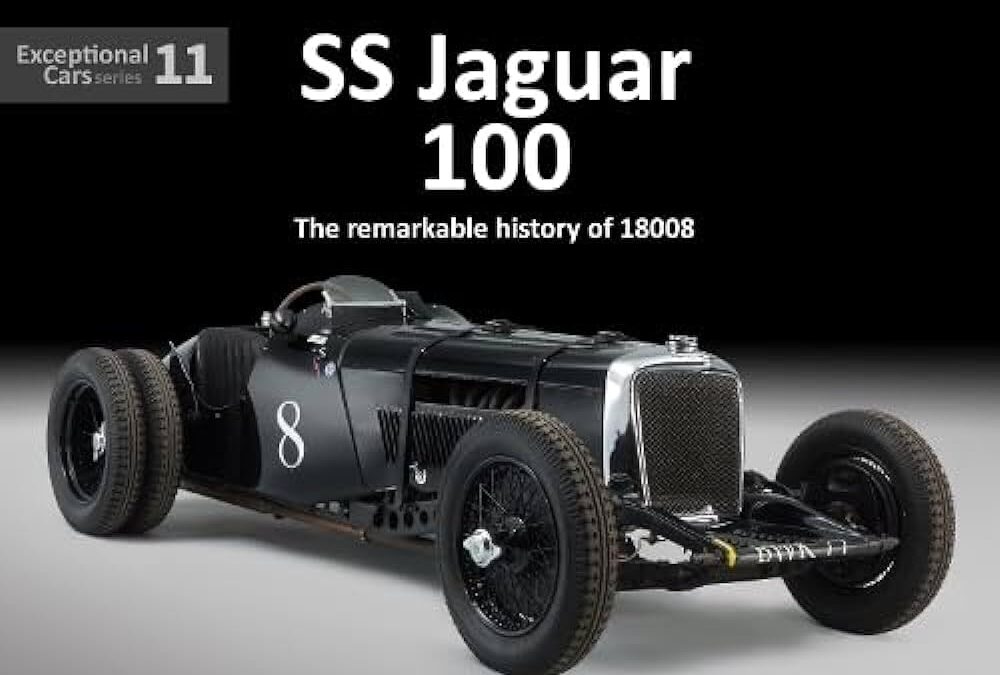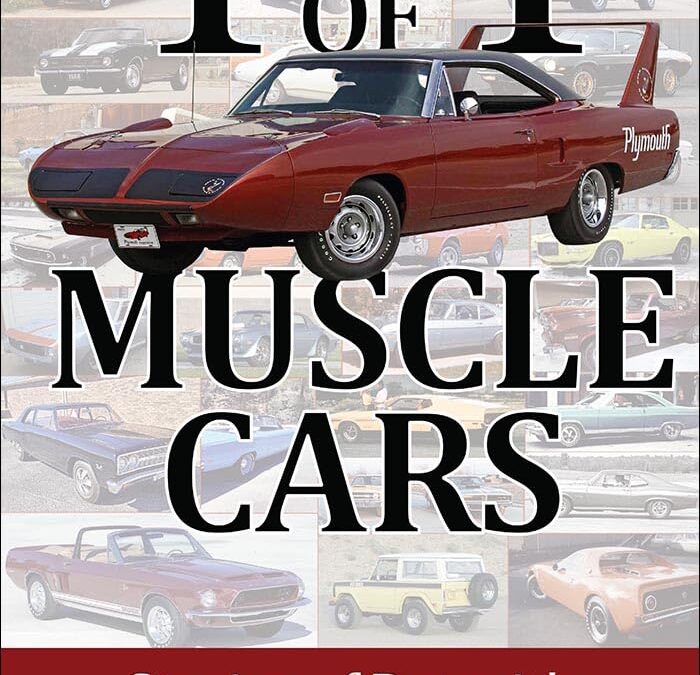
Learn about the rarest muscle cars ever produced with this new book.
In the world of muscle cars, many were produced and sold in large enough quantities that they would be considered special but not particularly rare at the time of production. The Boss 429 and Plymouth Superbird were produced for racing homologation reasons, and since they were very expensive to produce, the manufacturers ensured that they would be rare. However, there is rare, and then there is rare.
Prototypes and special factory builds, factory production cars, and super car tuners and builders are all covered in this new book by muscle-car historian Wes Eisenschenk. Some are single examples, some are very close to being the last remaining example, and all are extremely rare. Some have no surviving example known to exist. Featured cars include a Boss 429 Cougar, a 1971 Pontiac Ventura II Sprint 455, a 1965 Chevelle 300 COPO car with the L78 option, and a 1970 FK5 Deep Burnt Orange Metallic Superbird. Dealer promotional specials include a 1968 AMC AMX Von Piranha, a 1970 Dick Harrell LS6 454 Camaro, and a 1973 Nickey Chevrolet 427 Nova.
These are cars that you will read about but likely never see. For a fun ride through muscle-car history and great stories of the rarest muscle cars ever produced, add this book to your automotive library today.
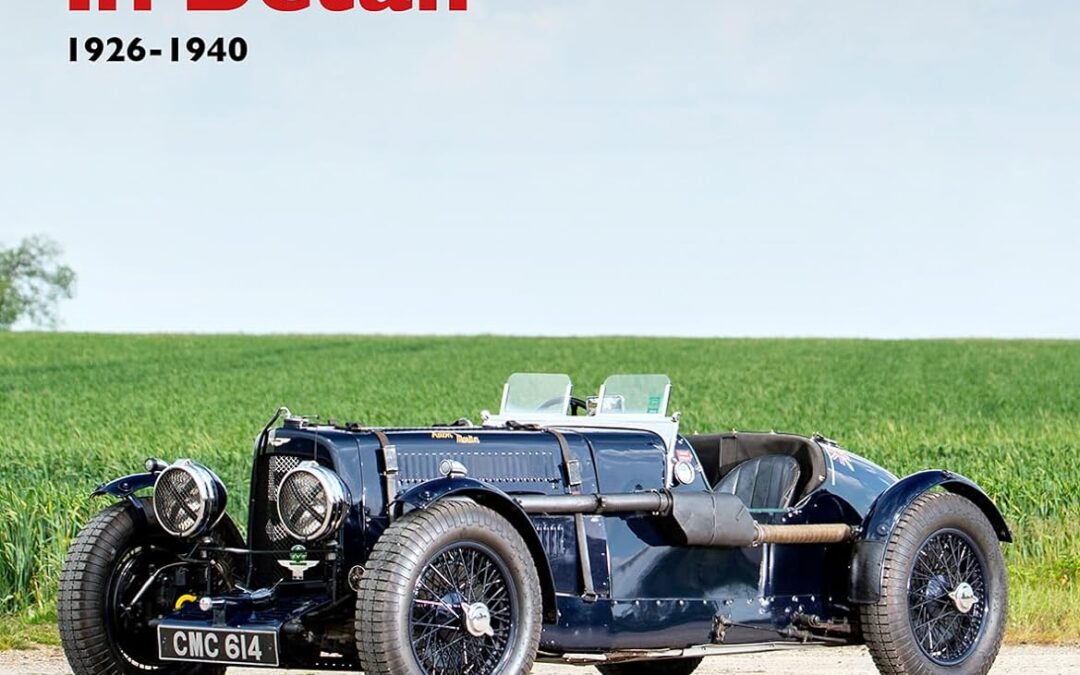
Aston Martin has produced some of the finest sports cars made. One of the company’s most exciting periods was under the leadership of Augustus Bertelli. The company’s innovative cars, built between 1926 and 1940, were outstanding in terms of reliability and performance, and were proved in that toughest of motor sport classes, endurance racing – in particular the Le Mans 24 Hours race. This book looks at the cars produced by Aston Martin under the watchful eye of Bertelli, and covers the cars made by the company up to the start of the Second World War. It includes the 1.5-litre First, Second and Third Series cars and the 2-Litre range from 1936. These Aston Martins of the 1920s and 1930s – International, Le Mans, Mark II, Ulster and Speed models – are all covered in this book. Beyond Bertelli’s era, the book sheds light on the contributions made by engineer Claude Hill and owner Gordon Sutherland. It explores their innovative concept cars, ‘Donald Duck’ and Atom, which played a pivotal role in shaping the company’s post-war success under David Brown. Accompanied by a rich collection of contemporary and present-day photographs, this book stands as the definitive reference work solely dedicated to these beloved cars, revered by a passionate community of owners fostered by the Aston Martin Owners Club. Furthermore, these historic cars continue to enjoy great popularity, making this book a must-have for enthusiasts and admirers alike.

Trophies and Scars is the profoundly personal, sincere, and remarkably revealing story of the life and times of NASCAR Hall of Famer Ray Evernham. A son of the Jersey Shore, Evernham dedicated his life to fulfilling his boyhood dream of becoming a professional race car driver.
By age eighteen, he was banging fenders with good success on the Northeast short track circuit. When his dreams of becoming an Indy car sensation literally crashed and burned, he turned to Roger Penske’s International Race of Champions (IROC), before another brutal crash forced him to give up his Indy dream for good.
It was time to change careers.
As a leader of a race team on the technical rather than the driving side, he discovered new skills critical to building successful racing organizations. A brief, ill-fated, and downright volatile stint on Alan Kulwicki’s crew, turned into a “right place at the right time” scenario, sparking a seminal partnership with racing phenom Jeff Gordon. They would prove to be one of the most potent racing duos in history.
Evernham shares previously untold tales of how the duo led the No. 24 team to three championships in four seasons (1995, 1997, 1998) and a series-leading forty-seven wins, revealing in candid detail how and why their storied relationship came to an end.
The book also details Evernham’s time spearheading the return of Dodge to NASCAR, building Evernham Motorsports into one of the most successful NASCAR teams, as well as his transformation into a TV personality with roles as a NASCAR analyst for SPEED, ESPN, ABC, FOX, and NBC and as host to his own TV series, AmeriCarna, on the Velocity channel.
Woven throughout all these stories recounting the many twists and turns of his life, he reveals how he buried himself in work to cope with his personal challenges, such as his son Ray J.’s battle with leukemia and later autism diagnosis. Many of these painful challenges ultimately brought rich rewards, such as the formation of the Evernham Family Racing for a Reason Foundation, funding for IGNITE, education and training programs for young adults with high-functioning autism or Asperger’s syndrome, his loving marriage to Erin, and the birth of their daughter Caite.
You needn’t be a racing fan to appreciate Evernham’s inspiring journey of tireless persistence, radical determination, steadfast leadership, and fearless reinvention. For as he believes, a life lived to the fullest is packed with trophies–and scars.
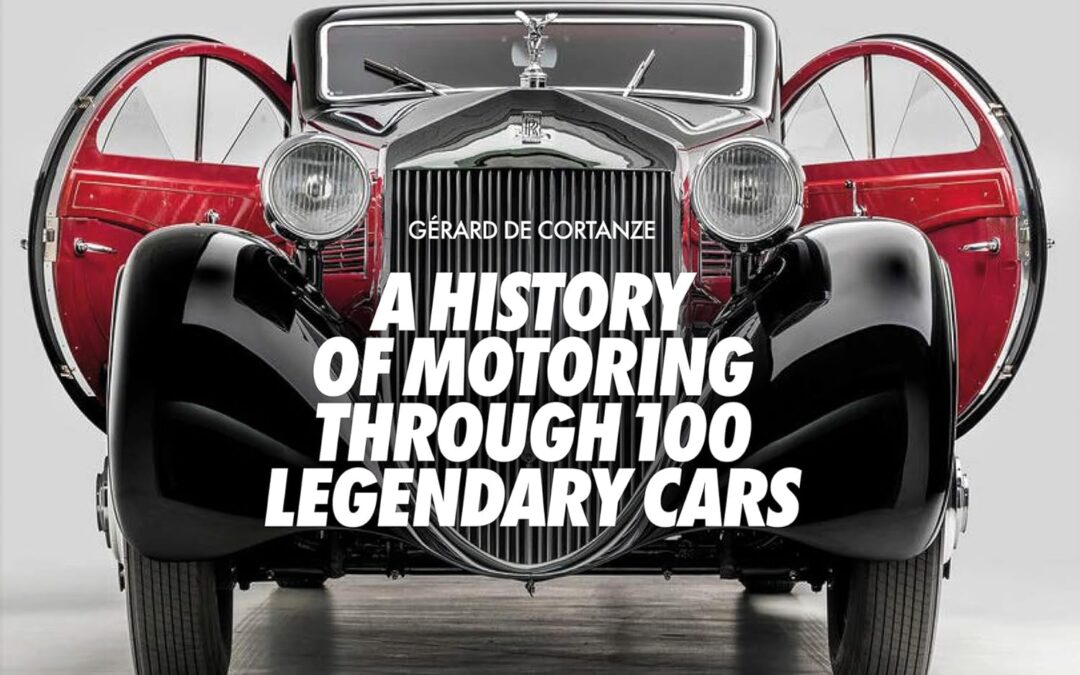
• A very rich iconography, both ancient and contemporary, which highlights the emblematic models of the history of the automobile
• A gift book for all car enthusiasts
From the mythical De Dion Bouton Type K1 to the Delahaye, from the Jeep Willys to the combi Volkswagen, from the Mercedes Benz to the Ford Mustang Shelby GT 500, from the Aston Martin DB7 to the Bugatti Veyron 16.4, and from the Austin Mini to the Range Rover. A hundred years of innovation, inventiveness and triumphs are condensed in this book, which reads as easily as a novel, and is illustrated with a rich and rare iconography.
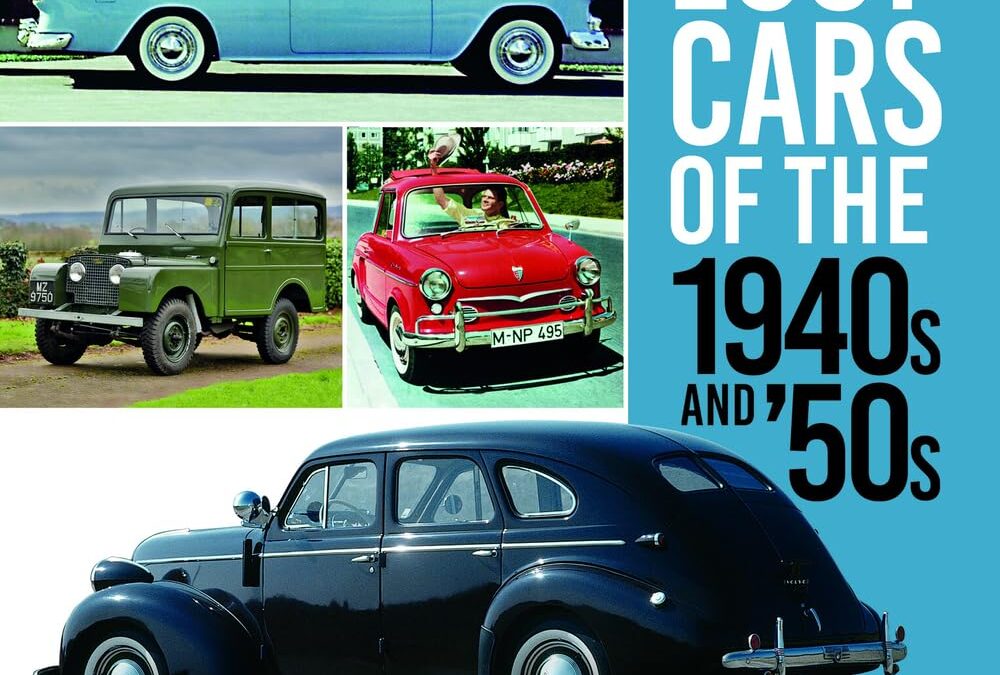
Sixty diverse cars, sixty fascinating stories, sixty contrasting specifications, but just one uniting factor: they’re all forgotten, neglected or misunderstood classics. In this engaging new book, these casualties and sideshows of motoring history from around the world finally get the recognition they deserve. Revisit daring new designs, interesting new economy cars, affordable sports cars, and some extraordinary luxury cars, from post-war austerity to the you’ve-never-had-it-so-good era, during which these elusive machines briefly shone. It was a time when engines gained more power, suspension became more cosseting, the chassis frame became a thing of the past, and styling followed jet fighters and space rockets. Giles Chapman, award-winning author of Lost Cars of the 1970s, has gathered together an all-new selection of intriguing strays of the car world, superbly illustrated with rarely-seen archive and contemporary images that bring all these cars back to life… even if they misfire once again in the process!
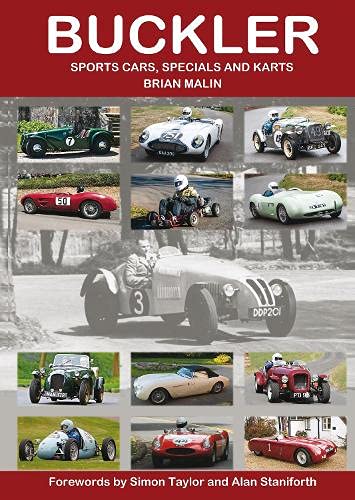
Although they were born 18 years apart, Derek Buckler and Colin Chapman were contemporaries when it came to designing and building ground-breaking sports cars in the late 1940s and early ’50s. They had much in common. Both were innovators, especially in areas of chassis design and improving the handling characteristics of their cars. Both founded successful companies and both died relatively young, Chapman in December, 1982, at the age of 54, and Buckler in 1964 at just 53 years of age. Yet, while Chapman’s Lotus went on to achieve worldwide fame, the name Buckler remains comparatively little known.
Special building was popular in the 1950s, mostly using ‘donor’ chassis from Austin 7 or Ford or simple ‘ladder’ frames but Buckler offered a multi-tubular space frame which was both stronger and lighter and, moreover, available in different models to suit different applications. He was also always ready to adapt his products to his customers’ requirements. In all of this, Buckler’s aim was to provide the impecunious enthusiast with a versatile sporting vehicle which could be used as daily transport during the week and, at weekends, in a wide range of motor sporting events from trials and driving tests to out and out racing. Often, however, the resulting Special would carry a name that concealed the Buckler contribution and a major part of the significance of Malin’s book and the vast amount of painstaking research put into it by its author is that much of that contribution is now revealed.
Buckler also, of course, made a range of complete cars starting with the versatile Mk5 and 6 and going on to encompass DD1 and DD2 with De Dion rear ends and the BB100 with backbone chassis introduced considerably before Lotus’s Elan and their other similarly based models. When karting became popular in the early 1960s, Buckler’s space frame technology found another application for which it was ideal and it became a major player in this burgeoning branch of motor sport. Buckler was also successful with its range of accessories including engine and transmission components and most notably its much admired close-ratio gears.
Brian Malin, the author, first owned a Buckler car in the 1970s and today competes in his Mk 5 in hill climbs and other events. He is an active member of the Buckler Register as well as the British Historic Kart Club and is often to be seen racing or demonstrating his Buckler kart so he is well placed to compile this comprehensive history of all things Buckler. It was first made available in loose-leaf form as long ago as 1990 but this is its first publication as a fully-fledged book, revised, updated and with additional material. Chassis design guru – and Buckler owner – the late Alan Staniforth provided the original foreword and this has been updated and included along with a new foreword by commentator and doyen of motor sport journalists, Simon Taylor.
The fourteen chapters begin with ‘Buckler and the Company’, cover the production and racing cars with some individual histories, the Buckler accessories including one chapter on the badges alone, overseas distribution – New Zealand was a particularly strong market for Buckler – and a fascinating section on the car advertisements before going on to cover the kart story in similar detail. The same number of appendices include reproductions of road tests, articles written by Derek Buckler, specifications of close-ratio gears and Buckler-tuned Ford engines, kart track tests and even one on Buckler letterheads. Malin’s work is truly encyclopaedic and therefore remarkable value for money not just as a reference on the Buckler marque but for its entertaining insight into the world of amateur motor sport of its time. The hundreds of illustrations range from reproductions of high quality contemporary and recent photographs to some admittedly lower quality originals, some of them obviously retouched to improve clarity, whose inclusion is well justified for their essential contribution to the Buckler story.
Brian Malin is to be congratulated for his perseverance in finally bringing to publication a book which is, to all intents and purposes, the full Buckler story.

The Testarossa, one of the most “provocative” Ferraris of all time, caused a sensation from its “preview” at the Paris Lido in 1984. It boasted extreme styling, with a rear track significantly wider than the front and conspicuous air intake strakes on the flanks, while mechanically it sported a mighty V12 engine displacing almost five.
The Supercars series could hardly fail to include a title devoted to this sensational car and recounting its technical and stylistic genesis.
The book covers both the Testarossa’s “ancestors” – the 365 GTB/4 ‘Daytona’ and the 512 BB – and its “descendants” – the 512 TR and the F512 M, not to forget the Spider version commissioned by Avvocato Gianni Agnelli and the sensational Mythos, the prototype designed by Pininfarina in 1989 and based on the rolling chassis of this car. The book is completed by the road tests that featured the car in the magazine Quattroruote.
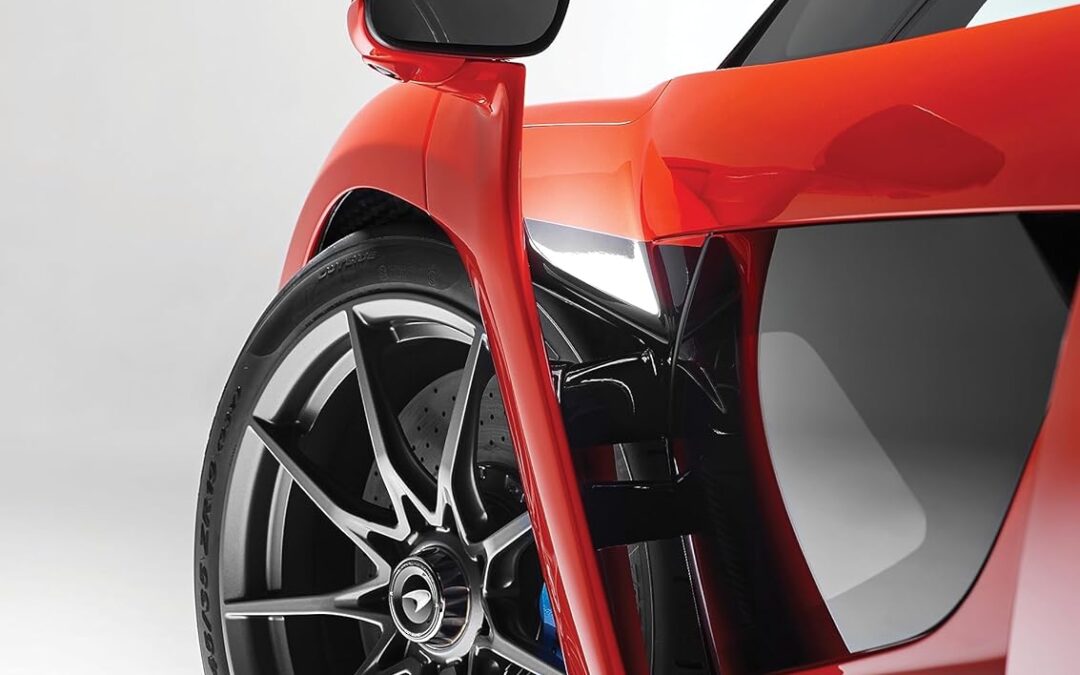
The definitive illustrated history of the exotic sports cars and supercars of McLaren Automotive.
When the McLaren Formula 1 team set up McLaren Cars and launched the revolutionary, iconic F1 road car in 1992, it turned the supercar world upside down. McLaren wouldn’t make another road car itself until it formed McLaren Automotive in 2010. It was set up with the vision not just to rival the established companies in the sports and supercar marketplace, but to disrupt and to constantly innovate in its pursuit of performance.
Readers will learn the following:
• Upstart company McLaren Automotive applied Formula 1 engineering expertise, innovation, and radical thinking to create cars that quickly became benchmarks for performance, ride, and handling against long-established supercar manufacturers such as Ferrari, Lamborghini, and Porsche.
• Unparalleled insight from the designers, engineers, aerodynamicists, and test drivers who create McLaren Automotive’s cars, with modern, independent insight from test drives by automotive journalists and the author
• Detailed technical insight, background stories, and data to the creation, development, and manufacture of all of McLaren Automotive’s sensational cars, with the text supported by comprehensive data tables and illustrated by images from a team of world-renowned automotive photographers
This book contains incredible insight and detail from access to McLaren’s press archives, as well as interviews with countless key people within the company. The first and only book dedicated entirely to McLaren’s incredible road cars, this is the complete history of a fascinating automotive brand that’s challenged the establishment.
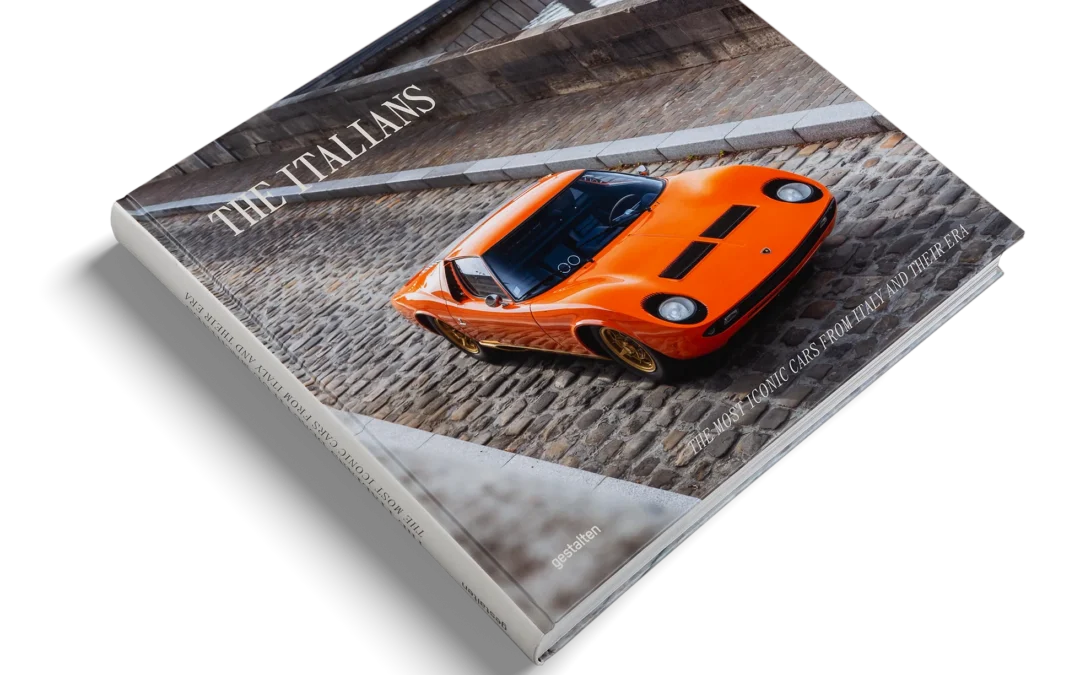
Italy is the homeland of “La Bella Macchina” and the cradle of automotive culture. This book celebrates the most iconic cars and visionary designers from the peninsula.
This stunningly illustrated book takes readers on a journey through the history of Italian automotive design, showcasing some of the most iconic and beloved models from the 1920s to the early 2000s.
Delving deep into the craftsmanship and artistry of vintage automobiles, this book explores how Italian car design has been at the center of technology, culture,and creativity—and how Italian designers like Pininfarina, Zagato, Bertone, Giugiaro, Gandini, and Ghia have influenced international car designs and brands.
With striking archival and contemporary images, The Italians – Beautiful Machines reveals the fascinating stories behind some of the most famous cars from Italy and what makes them so desirable. This book uses the lens of automotive design to chart the evolution of culture over the last 100 years. The Italians – Beautiful Machines is an impactful celebration of Italian car design and its lasting influence on design and culture.
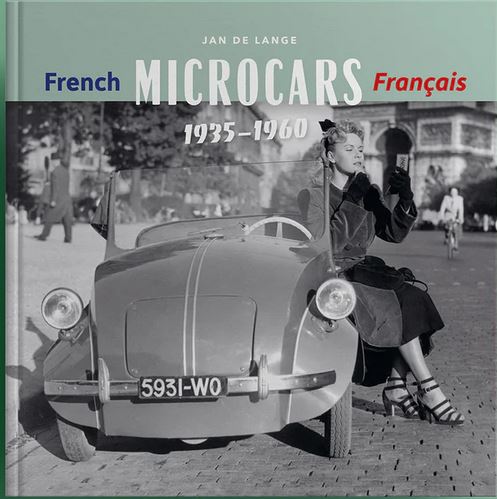
By 1935, Citroën, Peugeot and Rosengart had stopped producing their economy models. For the average Frenchman it was now almost impossible to buy a car. Many companies and individuals tried to find a solution by designing some sort of car for people who couldn’t afford one: an impossible task. Still, from 1935 up to 1960, more than 100 attempts were made, ranging from brilliant to absurd.
The variety of these constructions is mind boggling, but so far, they have generally been ignored by car historians. This book aims to fill the gap with histories of the most important concepts and constructions, illustrated with many hundreds of high-quality period photographs and documents.
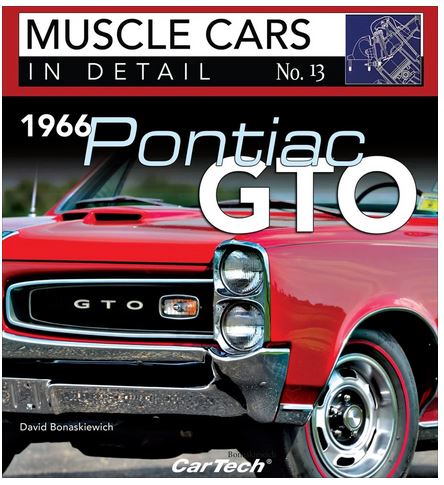
Pontiac’s GTO is often credited as being the first muscle car. As model year 1966 ended, an astounding 96,946 GTOs traversed Pontiac assembly lines, which set a high-water mark that would cement the GOAT as the most salable muscle car that was produced during the golden age of performance.
Author David Bonaskiewich examines this model year in precise detail, taking into account every cosmetic change and optional hardware that warranted this sales boom. The Coke-bottle styling for the remodeled GTO certainly tipped the scales for some consumers. However, as they say, “The devil is in the details.”
This book delves into those details, showcasing the vast array of optional equipment across its three bodystyles (hardtop, sports coupe, and convertible). Thorough examinations of the drivetrain, interior, suspension, brakes, and wheels and tires are exhaustive, which unveils exactly why the 1966 GTO was the most successful muscle car ever assembled.
Tune up those Tri-Power carburetors, turn on your favorite tune, and twist the key with 1966 Pontiac GTO: In Detail!

Built on a modified Jaguar XJR-14 chassis by Tom Walkinshaw Racing (TWR) with Porsche engine and project approval to compete in the IMSA championship run according to WSC rules. Cancelled due to regulation changes, Joest Racing Team took over the project and claimed back-to-back victories overall in 1996 and ’97.
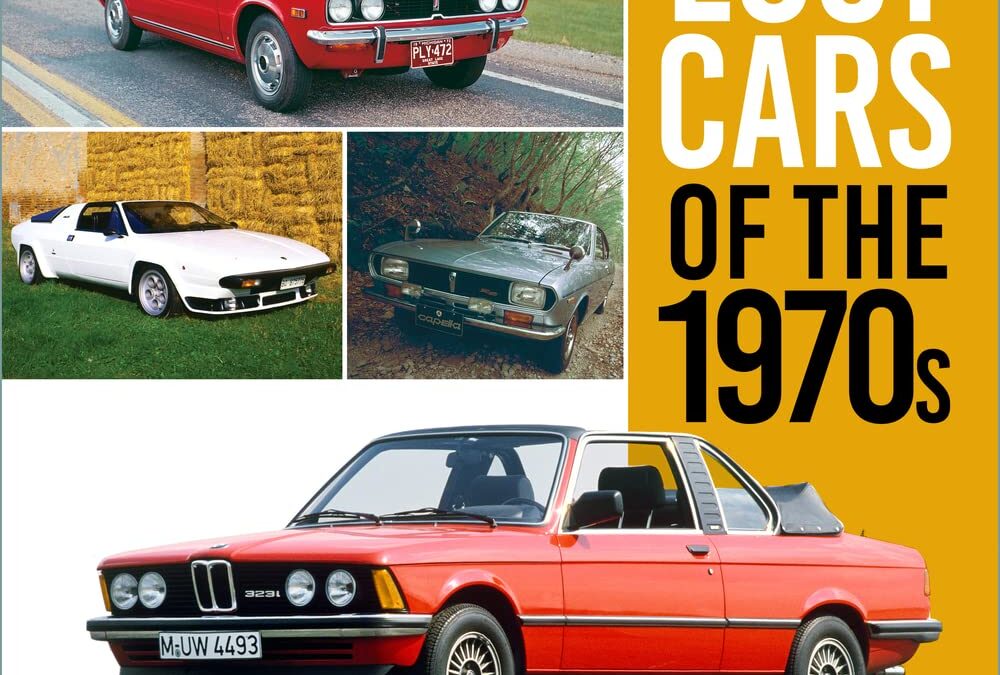
Sixty diverse cars, sixty fascinating stories, sixty contrasting specifications, just one uniting factor: they’re all forgotten, neglected or misunderstood classics.
The casualties and sideshows of motoring history from around the world finally get the recognition they deserve. Revisit a motoring decade when fuel economy was top priority, the rotary engine rose and fell, and car-buyers wanted a hatchback and the latest styling and safety features. Those that made the grade found global popularity – now meet the cars left behind.
Italy’s clever plan to update the Mini; the French GT coupé with an extra seat; America’s electric runabout that paved the way for Tesla; Britain’s stylish, homespun sports cars; the Japanese limo meant to do 25mph; the ‘safety car’ turned into a Polish workhorse… each one enjoys a detailed review giving the context and thinking around them.
The terrific archive images also highlight thirty 1970s design specials and one-offs – even more amazing cars pointing to a future that never quite came true.
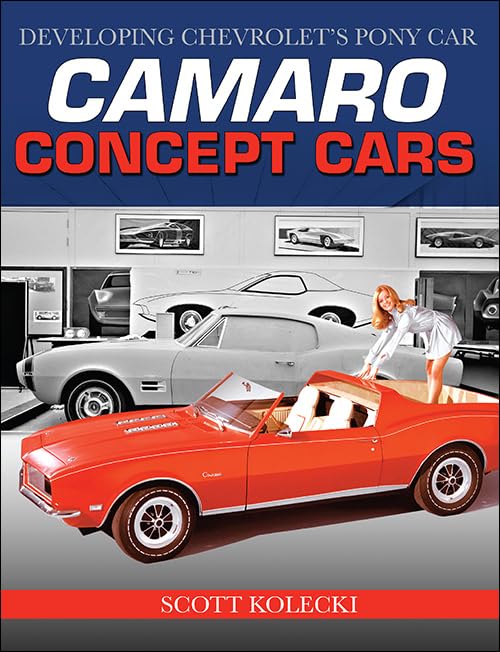
Learn about the creation of every generation of Chevrolet’s pony car!
For more than 50 years, the Chevrolet Camaro has been an indelible part of the modern automotive landscape. Since its introduction in 1967, Chevrolet’s immensely popular pony car has redefined American automotive styling by setting the bar and then raising it with the introduction of each generation.
How did the Camaro become one of the most celebrated automobiles of all time? What was its origin? What factors contributed to its creation and continued evolution through periods of economic uncertainty? How, when so many other cars have come and gone, has the Camaro survived and flourished?
Automotive historian Scott Kolecki explores those questions in Camaro Concept Cars: Developing Chevrolet’s Pony Car, as he introduces the men and women who created Chevrolet’s successful sports car. This book looks at the factors that contributed to its evolution through six distinct generations and explores the concept and design prototypes that gave rise to the production models that we know and love today.
This is the ultimate book for anyone who has owned (or dreamed of owning) a Camaro as well as for the countless enthusiasts around the globe who continue to celebrate and share the car’s rich heritage with future generations.
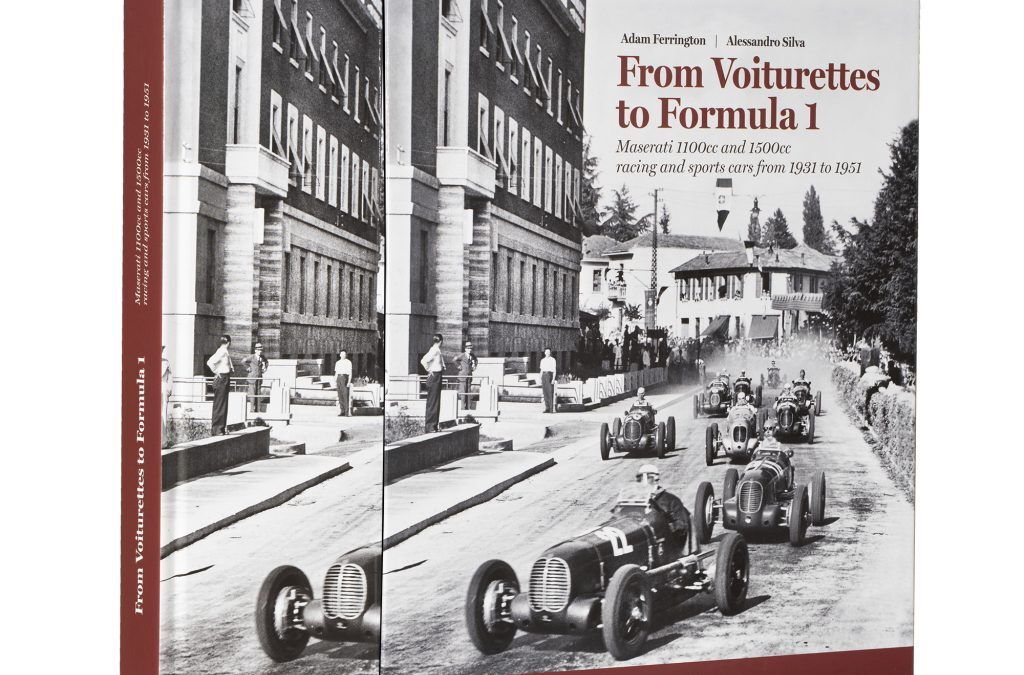
Five Chapters cover the five Maserati voiturette models, in the order 4CS, 4CM, 6CM, 4CL and 4CLT, the four-cylinder and six-cylinder, 1100cc and 1500cc sports and racing cars, of which Maserati built just over a hundred examples between 1932 and 1951 (plus 13 spare engines). Historical sections give a yearly overview of sports car, voiturette or Grand Prix racing (according to model). These overviews precede a description of each batch of cars produced in the relevant chapter.
For each individual car produced, a chassis by chassis description is followed by:
1) a complete list of contemporary race appearances and results (generally up to 1955)
2) profiles (cross-referenced if necessary) of almost all of drivers, owners, entrants, teams and related personalities mentioned in the book.
Technical sections follow the description of each batch of cars in the respective chapter.
Text in English
Limited Edition of 500 copies
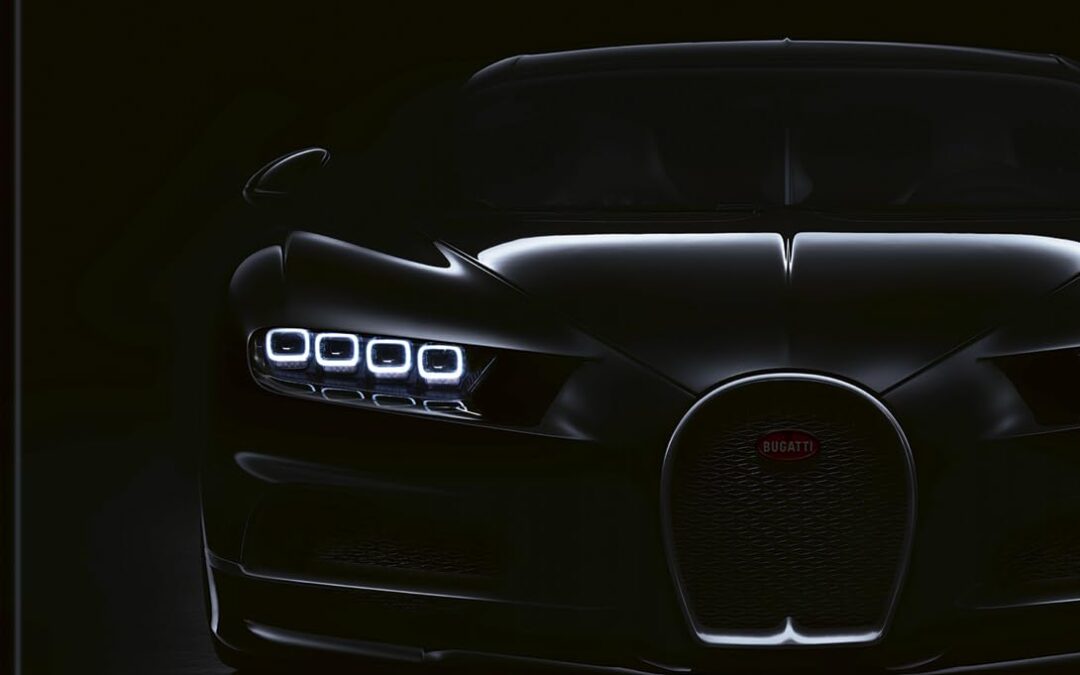
• Star photographer René Staud provides the ultimate proof: Black is beautiful
• From the legendary Alfa Romeo 8C from the 1930s, to the Bugatti Veyron Grand Sport Vitesse, the fastest open-top series sports car
• With exciting texts by Jürgen Lewandowski and contributions by Andrea Zagato (CEO Zagato), the head of design at Mercedes, Gorden Wagener and design critic Stephen Bayley
René Staud, the grand master of automobile photography, has published a new illustrated book. In his coffee-table book Black Beauties, the automotive photographer devotes himself entirely to the color black. In this extraordinarily book, Staud takes car lovers on a journey through time and presents the top models of the world’s greatest sports car brands. From the legendary Alfa Romeo 8C from the 1930s, to the declared goddess Citroën DS, to the fastest open-top series sports car, the Bugatti Veyron Grand Sport Vitesse, the star photographer demonstrates the aesthetics that the color black lends a car. Staud’s photographs are characterized by his trademark striking style and uniquely showcase the classic elegance and sporting potency of the vehicles. But this impressive coffee table book does not only inspire with its great photos. The texts are by Jürgen Lewandowski, a luminary in automotive journalism and author of over 90 books on the subject. In addition, comments by Andrea Zagato (CEO Zagato), Gorden Wagener (head of design Mercedes) and Stephen Bayley (journalist and design critic) are included to provide the reader with specific insider knowledge from the industry. Text in English and German.
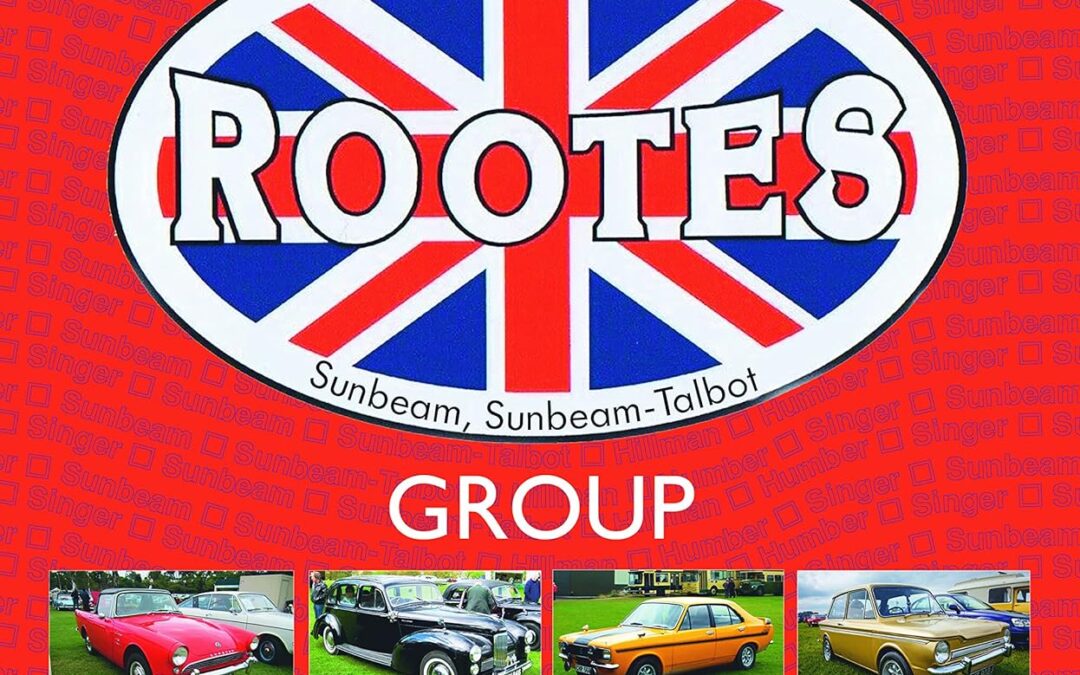
From the early 1930s until the mid-1970s the Rootes Group was one of Britain’s foremost car manufacturers, producing and selling a multitude of models under the Hillman, Humber, Singer, Sunbeam and Sunbeam-Talbot badges. Some of these cars have been the subject of individual model histories, but this is the first book to bring the total Rootes model line together in one major reference book.
Written by one of Britain’s most able car historians, the late Graham Robson, this book has now been reprinted for future generations to enjoy. It covers the company’s history, and details all the major marques within the Rootes Group. The book looks at the overall marketing strategies as well as the widespread use of common components across the range. Individual descriptions of each model built results in a book of great breadth and absorbing interest, that will be welcomed back by all classic car enthusiasts.













